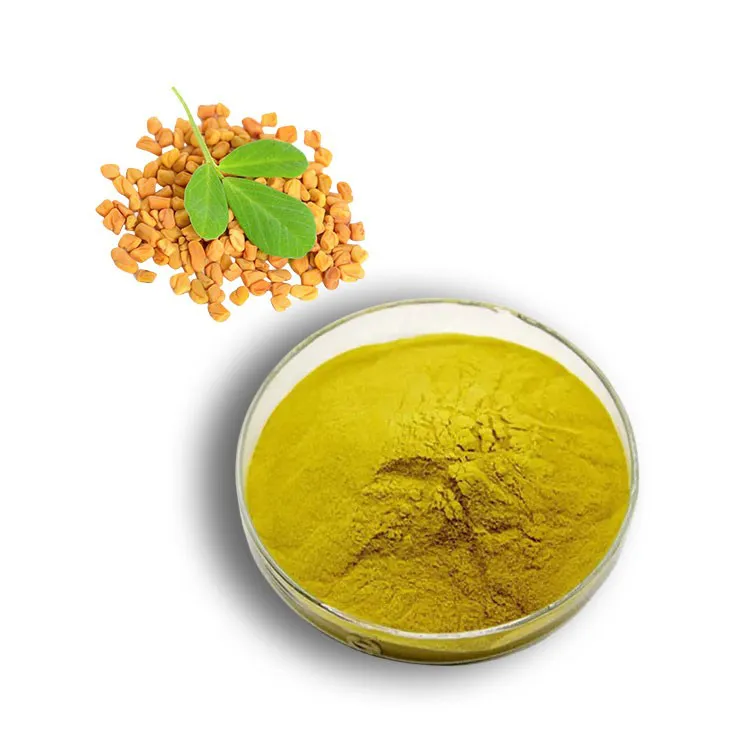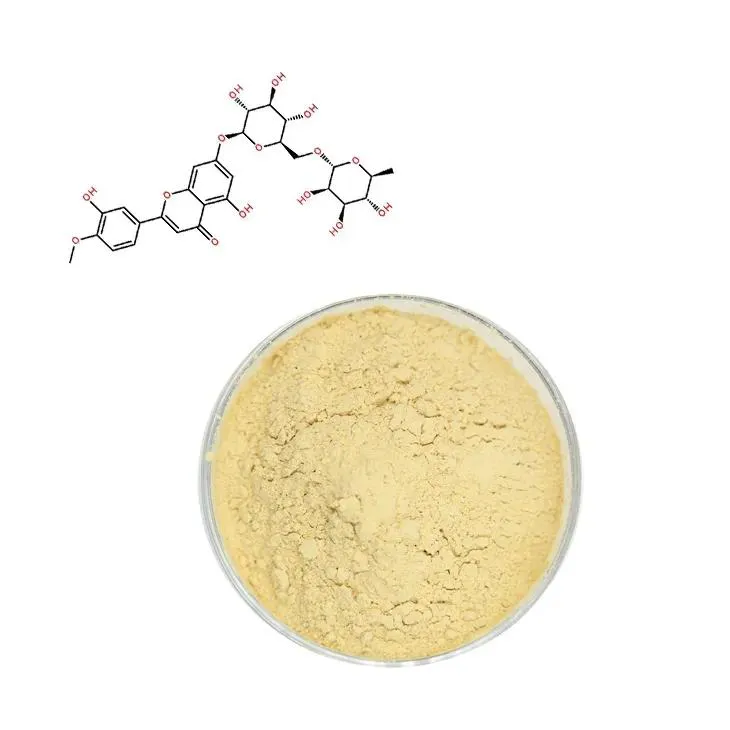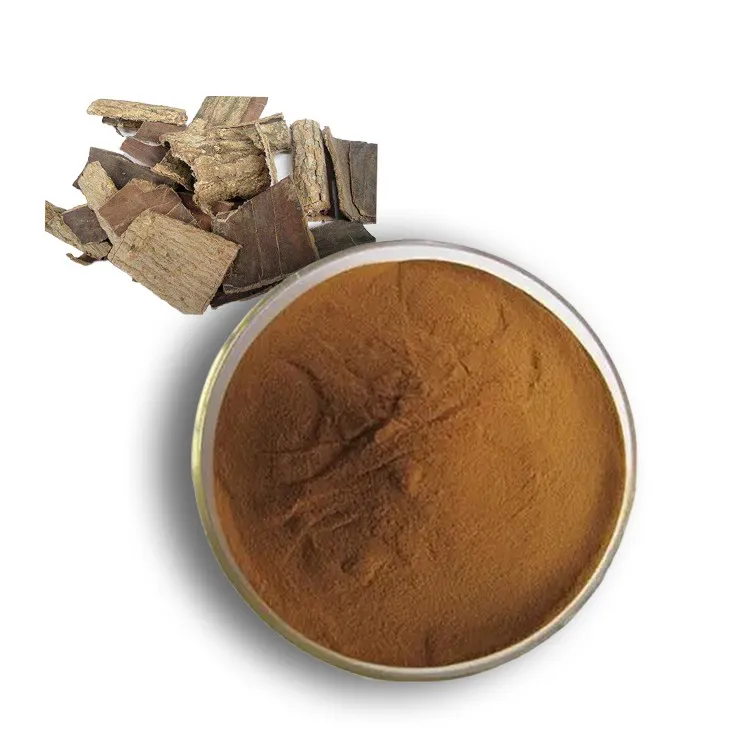- 0086-571-85302990
- sales@greenskybio.com
is it harder to extract dna from plants or animals?
2023-09-27
1. Differences Between Plant and Animal Cells
1. Differences Between Plant and Animal Cells
Plant and animal cells have fundamental differences that affect the ease of DNA extraction. Understanding these differences is crucial for determining the complexity of the extraction process.
Cell Wall Presence:
- Plant Cells: They possess a rigid cell wall made primarily of cellulose, which provides structural support and protection. This cell wall acts as a barrier during DNA extraction, making it more challenging to access the genetic material.
- Animal Cells: Unlike plant cells, animal cells do not have a cell wall. They only have a plasma membrane, which is easier to penetrate, simplifying the initial steps of DNA extraction.
Vacuoles:
- Plant Cells: They contain large central vacuoles that store water, nutrients, and waste products. These vacuoles can complicate the extraction process due to the presence of various compounds that may interfere with DNA purification.
- Animal Cells: While animal cells have smaller vacuoles, they do not have a large central vacuole. This absence reduces the potential for contamination from cellular waste products during DNA extraction.
Organelle Composition:
- Plant Cells: In addition to the nucleus, plant cells contain chloroplasts and other organelles that can produce secondary metabolites. These substances can interfere with DNA extraction and purification.
- Animal Cells: Animal cells have a simpler organelle composition, focusing mainly on the nucleus, mitochondria, and other essential organelles, which makes the extraction process less complicated.
Nucleus Structure:
- Plant Cells: The nucleus in plant cells may be surrounded by additional layers or structures that can make it more difficult to isolate and extract DNA.
- Animal Cells: The nucleus in animal cells is more accessible, allowing for easier DNA extraction.
These differences highlight the inherent challenges in extracting DNA from plant cells due to their structural complexity compared to animal cells. The presence of a cell wall, large vacuoles, and additional organelles in plant cells can make the DNA extraction process more labor-intensive and technically demanding.
2. Challenges in Plant DNA Extraction
2. Challenges in Plant DNA Extraction
DNA extraction from plants can be a complex process due to several inherent challenges that are unique to plant cells. These challenges can make the process more difficult compared to extracting DNA from animal cells. Here are some of the key challenges faced during plant DNA extraction:
Structural Complexity
Plant cells have a rigid cell wall made primarily of cellulose, which provides structural support and protection. This cell wall is much thicker and more robust than the cell membrane found in animal cells. The presence of the cell wall can make it difficult to physically break open the plant cells to release the DNA.
Presence of Polysaccharides and Lignin
In addition to cellulose, plant cells also contain high amounts of other complex polysaccharides and lignin. These substances can interfere with the DNA extraction process by binding to the DNA molecules, making it challenging to separate and purify the DNA.
Secondary Metabolites
Plants produce a wide range of secondary metabolites, including phenolic compounds, which can be released during the extraction process. These compounds can react with DNA, leading to the formation of adducts and cross-linking, which can damage the DNA and reduce its quality.
High Levels of Polyphenols and Tannins
Polyphenols and tannins are common in many plant species and can bind to nucleic acids, proteins, and other cellular components. Their presence can cause aggregation and precipitation, making it difficult to isolate pure DNA.
Variability in Plant Material
Plant tissues can vary widely in their composition, depending on factors such as species, age, and growth conditions. This variability can affect the efficiency of DNA extraction, as different plant tissues may require different extraction protocols to achieve optimal results.
Presence of Endophytes and Symbionts
Plants often harbor endophytic microorganisms or symbiotic organisms within their tissues. These organisms can contribute additional DNA to the extraction, complicating the process of isolating plant-specific DNA.
Contamination with Soil and Microorganisms
Plants are often in contact with soil and other environmental factors, which can lead to contamination with soil particles, microorganisms, and other extraneous DNA. This contamination can interfere with the extraction process and affect the purity of the extracted DNA.
To overcome these challenges, various techniques and modifications to the DNA extraction process have been developed. These techniques often involve the use of enzymes to degrade the cell wall, the removal of interfering substances, and the optimization of extraction conditions to maximize DNA yield and purity. Despite these challenges, successful DNA extraction from plants is crucial for various applications, including genetic research, plant breeding, and forensic analysis.
3. Challenges in Animal DNA Extraction
3. Challenges in Animal DNA Extraction
Extracting DNA from animals, while a common procedure in molecular biology, is not without its challenges. The complexity of animal tissues and the presence of various cellular components can make the process more intricate compared to plant DNA extraction. Here are some of the key challenges faced in animal DNA extraction:
1. Presence of Nucleases: Animal cells contain various types of nucleases that can degrade DNA. These enzymes are highly active and can quickly break down DNA if not properly inactivated during the extraction process.
2. High Levels of Proteins: Animal tissues are rich in proteins, which can interfere with DNA extraction. Proteins can bind to DNA and make it difficult to separate the DNA from the protein matrix, requiring additional steps to remove these proteins effectively.
3. Presence of Lipids: Adipose tissues and cell membranes in animals contain lipids that can contaminate the DNA and interfere with downstream applications. Lipids can be particularly challenging to remove due to their hydrophobic nature.
4. Blood and Hemoglobin: Blood samples from animals can be rich in hemoglobin, which can bind to DNA and make purification more difficult. Specialized protocols are often required to remove hemoglobin effectively.
5. Cell Membrane and Nucleus Integrity: The integrity of the cell membrane and nucleus in animal cells can be a challenge. The cell membrane must be breached to access the nucleus, and the nucleus must be opened to release the DNA, which requires careful handling to avoid shearing the DNA.
6. Variability in Tissue Composition: Different tissues in animals can have varying compositions, which can affect the efficiency of DNA extraction. For example, muscle tissue may require different extraction protocols compared to liver or brain tissue.
7. Ethical and Legal Considerations: Depending on the species and the context of the research, there may be ethical and legal considerations that must be taken into account when extracting DNA from animals.
8. Sample Handling and Storage: Proper handling and storage of animal samples are crucial to prevent degradation of DNA. Contamination and degradation can occur if samples are not handled and stored correctly.
Despite these challenges, advancements in technology and methodology have made animal DNA extraction more efficient and reliable. Researchers have developed various kits and protocols to overcome these issues, ensuring that high-quality DNA can be extracted from a wide range of animal sources.
4. Techniques for DNA Extraction
4. Techniques for DNA Extraction
DNA extraction is a fundamental process in molecular biology, genetics, and forensic science. The techniques used for extracting DNA from both plants and animals have evolved over the years, becoming more efficient and reliable. Here, we will explore some of the common methods used for DNA extraction from both sources.
4.1 Traditional Extraction Techniques
Traditional DNA extraction methods involve several steps including cell lysis, protein digestion, and DNA precipitation. For plants, this often includes:
- Grinding the plant material to break open the cells.
- Digestion with enzymes like cellulase and pectinase to break down cell walls.
- Lysis using detergents to disrupt cell membranes.
- Proteinase K treatment to digest proteins and release DNA.
- Phenol-Chloroform extraction to separate DNA from proteins and other cellular debris.
- Ethanol precipitation to precipitate the DNA out of solution.
For animals, the process is somewhat similar but may not require the same level of cell wall degradation:
- Homogenization of tissue to break open cells.
- Lysis using detergents.
- Proteinase K treatment.
- Phenol-Chloroform extraction.
- Ethanol precipitation.
4.2 Commercial Kits
To simplify the process and increase efficiency, many researchers use commercial DNA extraction kits. These kits are designed to streamline the extraction process and often include all necessary reagents and buffers. They are available for both plant and animal DNA extraction and are optimized for different types of samples.
4.3 Automated Systems
Automated DNA extraction systems are becoming increasingly popular due to their speed, reproducibility, and reduced risk of contamination. These systems use robotics to perform the extraction steps, including cell disruption, purification, and elution of DNA.
4.4 Magnetic Bead Technology
Magnetic bead-based DNA extraction is a newer method that uses magnetic particles coated with streptavidin, which bind to biotinylated DNA. This technology allows for rapid and efficient purification of DNA, with the advantage of being less dependent on the sample type.
4.5 Chelex Method
The Chelex method is a simple and quick method for DNA extraction, particularly useful for small samples. It involves the use of a copolymer of polyvinyl chloride (PVC) and dimethylaminoethyl methacrylate (DMAEMA) that can bind and precipitate DNA while allowing proteins and other contaminants to be washed away.
4.6 Comparison of Techniques
Each of these techniques has its advantages and disadvantages. Traditional methods are time-consuming and labor-intensive but are often effective for a wide range of samples. Commercial kits and automated systems offer convenience and reproducibility but can be more expensive. Magnetic bead technology and the Chelex method provide quick and efficient alternatives, especially for smaller or more specialized samples.
In conclusion, the choice of DNA extraction technique depends on the specific requirements of the research, including the type of sample, the amount of DNA needed, and the resources available. As technology advances, we can expect even more efficient and reliable methods to be developed for DNA extraction from both plants and animals.
5. Comparison of DNA Yield and Purity
5. Comparison of DNA Yield and Purity
When comparing the DNA yield and purity from plant and animal sources, several factors come into play. The efficiency of the extraction process, the presence of interfering substances, and the integrity of the DNA are all important considerations.
DNA Yield
- Plant DNA Extraction: Generally, plant DNA extraction can yield a significant amount of DNA due to the high content of polysaccharides and phenolic compounds that can be broken down to release DNA. However, the presence of these compounds can also interfere with the extraction process, potentially reducing the overall yield.
- Animal DNA Extraction: Animal cells typically have less DNA than plant cells, but the extraction process is often more straightforward due to fewer interfering substances. The yield may be lower, but the process is generally more efficient and requires less cleanup.
Purity
- Plant DNA Purity: The purity of DNA extracted from plants can be compromised by the presence of polysaccharides, phenolic compounds, and other secondary metabolites. These substances can bind to DNA and inhibit the activity of enzymes used in downstream applications, thus reducing the purity of the extracted DNA.
- Animal DNA Purity: Animal DNA is usually purer than plant DNA because the extraction process is less complicated by the presence of complex secondary metabolites. However, the presence of proteins and lipids can still pose challenges, requiring additional purification steps.
Factors Affecting Purity and Yield
- Cell Wall Composition: The rigid cell walls of plants can make the initial lysis of cells more challenging, potentially affecting both yield and purity.
- Presence of Secondary Metabolites: As mentioned, plants have a higher concentration of secondary metabolites that can interfere with DNA extraction and purification.
- Nucleic Acid Stability: Both plant and animal DNA can be degraded by nucleases if not properly handled during extraction, affecting yield and purity.
Techniques and Their Impact
- Cetyltrimethylammonium bromide (CTAB): A common method used in plant DNA extraction that helps in the separation of nucleic acids from proteins and polysaccharides.
- Phenol-Chloroform Extraction: Widely used in both plant and animal DNA extraction, this method helps in separating the DNA from proteins and other cellular debris.
- Column-based Purification: Both plant and animal DNA can be purified using column-based techniques, which can improve purity but may also reduce yield.
Conclusion on Yield and Purity
While plant DNA extraction may yield more DNA due to the higher content in plant cells, the purity is often lower due to the presence of interfering substances. Animal DNA extraction, on the other hand, may yield less DNA but is generally purer and requires fewer purification steps. The choice of extraction method and the specific characteristics of the plant or animal source can significantly influence the final yield and purity of the extracted DNA.
6. Factors Influencing the Difficulty of Extraction
6. Factors Influencing the Difficulty of Extraction
The difficulty of DNA extraction from plants or animals can be influenced by a variety of factors, each playing a significant role in the overall process. Here are some key factors that can affect the ease or complexity of DNA extraction:
Cell Wall Composition:
- The presence of a cell wall in plant cells, which is absent in animal cells, is a major factor influencing the difficulty of DNA extraction. Plant cell walls, composed of cellulose, lignin, and pectin, require additional steps for degradation to access the DNA.
Nucleic Acid Content:
- The amount of DNA present in the cells can affect the yield during extraction. Some organisms, particularly those with high metabolic rates, may have a higher concentration of DNA, making extraction potentially easier.
Presence of Secondary Metabolites:
- Plants often contain secondary metabolites such as polyphenols, which can interfere with DNA extraction by binding to nucleic acids and inhibiting the activity of enzymes used in the extraction process.
Sample Size and Homogeneity:
- The size of the sample and its homogeneity can impact the effectiveness of the extraction process. Larger samples may require more rigorous homogenization to ensure complete cell lysis and DNA release.
Technique Sensitivity:
- The sensitivity and specificity of the extraction technique can influence the difficulty of the process. Some methods may be more prone to contamination or may not be as effective in dealing with complex matrices.
Sample Preservation and Storage:
- The way samples are preserved and stored can affect the integrity of the DNA. Freezing or improper storage can lead to DNA degradation, making extraction more challenging.
Contamination Risk:
- The risk of contamination from environmental sources or from the sample itself (e.g., from microorganisms present in plant material) can complicate the extraction process.
Equipment and Reagents:
- The quality of equipment and reagents used in the extraction process can also impact the difficulty. High-quality, reliable equipment and reagents can facilitate a smoother extraction process.
Operator Skill and Experience:
- The skill and experience of the person conducting the extraction can significantly influence the outcome. A skilled operator is more likely to successfully navigate the challenges associated with DNA extraction.
Economic Factors:
- The cost of reagents and equipment can also be a factor, especially for laboratories with limited budgets. More affordable methods may be preferred, even if they are more labor-intensive or less efficient.
Understanding these factors can help researchers choose the most appropriate extraction method for their specific needs and can guide the development of new techniques to overcome current challenges in DNA extraction from both plants and animals.
7. Conclusion and Future Perspectives
7. Conclusion and Future Perspectives
In conclusion, the difficulty of DNA extraction varies significantly between plants and animals due to their distinct cellular structures and compositions. While plant cells present unique challenges due to their cell walls, secondary metabolites, and polysaccharides, animal cells can be difficult to work with due to their high lipid content and the presence of proteases. Both types of cells require specific techniques and careful consideration of the extraction process to ensure high yield and purity of DNA.
The comparison of DNA yield and purity has shown that, in some cases, plant DNA extraction may yield less DNA of lower purity compared to animal DNA extraction. However, advancements in technology and the development of new techniques have improved the efficiency and effectiveness of DNA extraction from both sources.
Several factors influence the difficulty of DNA extraction, including the type of organism, the presence of secondary metabolites, the cell wall composition, and the choice of extraction method. By understanding these factors and selecting the appropriate technique, researchers can optimize the DNA extraction process for their specific needs.
Looking to the future, ongoing research and technological advancements will likely continue to improve the efficiency and effectiveness of DNA extraction methods. The development of new enzymes, solvents, and extraction protocols will enable researchers to overcome current challenges and extract high-quality DNA from a wider range of organisms.
Additionally, the integration of automation and robotics in DNA extraction processes will further streamline the workflow and reduce the potential for human error. This will be particularly beneficial for large-scale projects and high-throughput studies, where the extraction of DNA from numerous samples is required.
In conclusion, while DNA extraction from plants and animals presents different challenges, advancements in technology and methodology will continue to enhance our ability to extract high-quality DNA from various sources. As our understanding of cellular structures and compositions deepens, we can expect to see even more innovative approaches to DNA extraction in the years to come.
- ▶ Hesperidin
- ▶ Citrus Bioflavonoids
- ▶ Plant Extract
- ▶ lycopene
- ▶ Diosmin
- ▶ Grape seed extract
- ▶ Sea buckthorn Juice Powder
- ▶ Fruit Juice Powder
- ▶ Hops Extract
- ▶ Artichoke Extract
- ▶ Mushroom extract
- ▶ Astaxanthin
- ▶ Green Tea Extract
- ▶ Curcumin
- ▶ Horse Chestnut Extract
- ▶ Other Product
- ▶ Boswellia Serrata Extract
- ▶ Resveratrol
- ▶ Marigold Extract
- ▶ Grape Leaf Extract
- ▶ New Product
- ▶ Aminolevulinic acid
- ▶ Cranberry Extract
- ▶ Red Yeast Rice
- ▶ Red Wine Extract
-
Withania Somnifera Extract
2023-09-27
-
Eyebright Extract
2023-09-27
-
Red Wine Extract
2023-09-27
-
Fenugreek Extract Powder
2023-09-27
-
Shikone Extract
2023-09-27
-
Cocoa Extract
2023-09-27
-
Diosmin
2023-09-27
-
Lily extract
2023-09-27
-
Eucommia Ulmoides Extract
2023-09-27
-
Saffron Extract Powder
2023-09-27





















